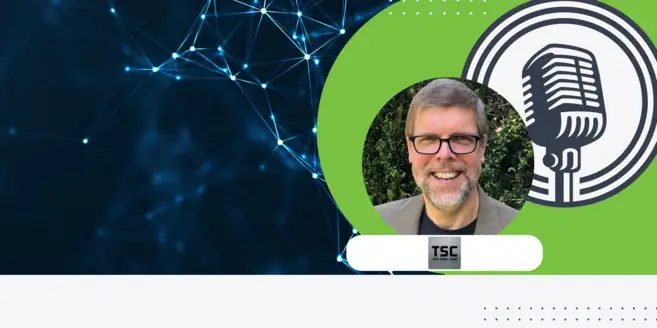
The evolution of 5G
14 Jul, 20234 minsWireless network technology has been continuously evolving to meet increasing demands a...

Wireless network technology has been continuously evolving to meet increasing demands and higher specification requirements. As the rollout of 5G continues, to cities and rural areas, mobile operator EE and broadband ISP giant BT have pledged to offer ultrafast 5G mobile solutions across the entire UK by 2028. And with research and development on next-generation 5G and 6G wireless technology and telecoms security to be ramped up as part of a £110 million government investment, we are likely to see big strides made this year.
So how we did we get here?
It all began with 1G…
The first generation of cellular network (wireless) technology 1G, was launched by Nippon Telegraph and Telephone (NTT) in Tokyo in 1979, before quickly gaining popularity in the US, Finland, UK and Europe in 1980s.
1G harnessed analogue technology designed to transmit only voice traffic and provide an information transfer speed of up to 2.4 kilobytes (KB) per second.
Although coverage was limited and rates were slow, the concept of not having to use fixed telephone lines for interpersonal communication made it a revolutionary development in the world of telecoms.
Where 1G offering was limited was in the quality in the sound it transmitted, and the fact that different systems operated on different frequency ranges, therefore there was no compatibility between systems. On top of this, calls were not encrypted, so anyone with a radio scanner could drop in on a call.
The second evolution
In the early to mid 1990s, 1G was superseded by newer 2G cellular technologies, able to provide an information transfer speed of up to 50 kilobytes (KB) per second.
Launched in Finland in 1991, it marked a shift from analogue to digital communication methods and harnessed a new technology for wireless transmission known as Global System for Mobile communication (GSM). This laid the groundwork for future wireless development.
Calls could be encrypted, and digital voice calls were significantly clearer with less static and background crackling. For the first time, people could send text messages (SMS), picture messages, and multimedia messages (MMS) from their phones.
However, the system still had limited mobility – only able to facilitate a low data rate and support a restricted number of users.
Third time lucky
The third generation of mobile technologies (3G) offered an information transfer speed of up to 3 megabytes (MB) per second.
It was launched in 2001 by NTT DoCoMo, with a central aim to standardise the network protocol used by vendors – beginning with the introduction of Universal Mobile Terrestrial / Telecommunication Systems (UMTS).
Video calling on mobile devices was supported for the first time and users could access data from any location in the world, as the ‘data packets’ that drive web connectivity were standardised. This cleared the way for the foundational developments of international roaming services.
3G’s increased data transfer capabilities (four times faster than 2G) also led to the rise of a plethora of new products and services such as video conferencing, video streaming and voice over IP (such as Skype).
However, in order to facilitate more advanced technologies, costly infrastructure, equipment and implementation were required, as well as higher bandwidths to support higher data rates, collectively resulted in more expensive mobile devices.
A video revolution
4G was first deployed in Stockholm, Sweden and Norway in 2009 as the Long Term Evolution (LTE) standard, providing support for interactive multimedia, voice, and video – making high-quality video streaming a reality for millions of consumers.
The fast mobile web access it offers (up to 1 gigabit per second for stationary users) also facilitates gaming services, HD videos and HQ video conferencing options.
The catch is that while transitioning from 2G to 3G was as simple as switching SIM cards, mobile devices needed to be specifically designed to support 4G – one factor that can be attributed to Apple’s rise to become the world’s first trillion dollar company.
While 4G is the current standard around the globe, some regions are plagued by network patchiness, an issue which many providers are working to overcome. The Shared Rural Network (SRN) programme has been created to boost 4G coverage in rural areas and Vodafone has announced that 57 new rural locations across the UK are now also receiving 4G broadband coverage.
As demonstrated, 4G has required wide deployment and upgrades, which is time consuming, and expensive hardware and infrastructure to implement.
Five times a charm
By the early 2000s, developers knew that 3G and even 4G networks wouldn’t be able to fulfil evolving connectivity demands. As 4G’s latency of between 40ms and 60ms is too slow for real-time responses, a number of researchers started developing the next generation of mobile networks. Enter 5G.
The fifth generation of mobile communications technology has three main features:
- High speed (a theoretical maximum information transfer speed of 10 gigabits per second).
- High reliability and low latency.
- A huge number of terminal networks to form a broader and connected Internet of Things (IoT) that would see billions of connected devices seamlessly share data across the globe.
Unlike previous generations that could piggyback off existing infrastructure, 5G is far more expensive and complicated to implement. For instance, it requires substantially more base stations than 4G and these must be positioned closer together.
However, demand is clearly fuelling progress and, as research, development and funds are pumped into establishing 5G and 6G networks UK-wide, the demand for high quality talent able to implement and maintain these systems will continue to soar.
Fancy helping to boost the UK connectivity? Check out our roles today.



